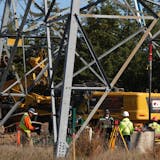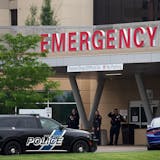PHILADELPHIA — America desperately needed new houses, and Ohio entrepreneur/inventor Carl Strandlund had a plan: Manufacture the components of compact, affordable and stylish dwellings for shipment (instructions included) to local distributors and buyers.
Unlike the popular stick-built “kit houses” Sears sold through its catalogs from 1908 to 1940, Strandlund’s “Lustron Homes” of 1948 were built mostly of steel. At least half of the nearly 2,700 houses Lustron manufactured before involuntarily declaring bankruptcy in 1950 are believed to exist, including several in the Philadelphia region.
The distinctive design and steel-paneled exterior of the Lustrons seem to have inspired the Sanctuary Hills streetscapes in the postapocalyptic “Fallout” video game series. And the actual houses have inspired fans, researchers, writers and buyers alike.
“We just loved the look of the house immediately,” said Vicky Nucci, who bought a Lustron in Woodbury, Pa., with her partner, Trevor Gulledge, last year for $250,000.
Carl Gainsborough and Karl Kernagis bought their Lustron in Haddonfield, N.J., for $210,000 in 2010 and have lived there ever since. Another Lustron, in northeast Philadelphia, is used by Congregation Beth Emanuel, a Messianic Jewish Community.
“It’s been cool to learn about the history [of Lustron Homes] as an affordable housing option for people coming back from the war,” Nucci, 28, said. “How cool is it to own a little piece of history?”
Said Gainsborough, 58: “You don’t have to remodel it. It’s fine, just the way it is.”
Radiant heat and a dual dish/clothes washer
Lustrons typically had 1,000 square feet of living space, two bedrooms and one bath, and initially sold for about $10,000. They were offered in four models and four colors, composed of 3,000 parts, and framed in steel. The exteriors were clad in porcelain enamel-on-steel panels like those common on gas stations of the era, making the houses generally easy to spot, even to this day.


